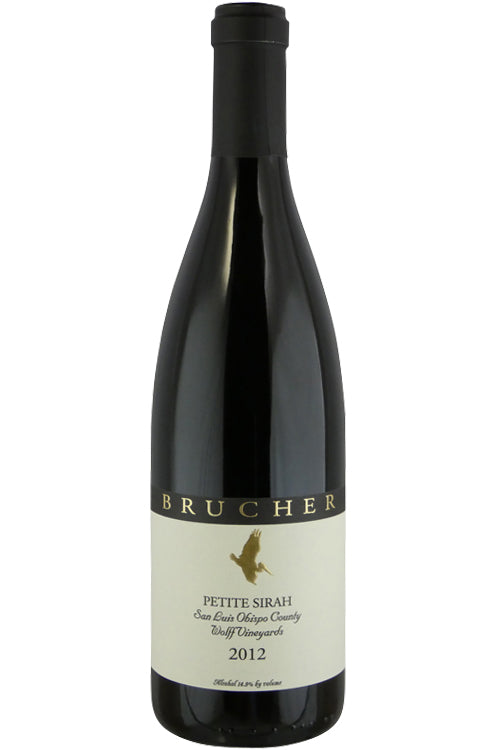1
/
of
1
Brucher Wolff Vineyards Petite Sirah - 2012 (750ml)
Brucher Wolff Vineyards Petite Sirah - 2012 (750ml)
Regular price
$10.99
Sale price
$10.99
Regular price
$19.99
Unit price
/
per
A great representative of Petite Sirahs, this is a wine that will stand up to almost any big taste. Serve with heavy flavors such as barbecue, game, and roasts.
Our Petite Sirah is a big, very bold in character wine that tends toward higher tannins and fruit. This is one of the few wines that can often be identified by just looking at its beautiful deep black/purple color (often described as inky) and the incredible deeply colored legs.
This is a charming wine that is full of beauty and flavor. It is fruity yet dry, with a nice long finish. This is a wine known for its big fruit flavors such as plums, blackberries and black cherries. Also notice its black pepper, caramel, licorice, cloves, and leather along with its big, bold character.
Winemaker's Notes
Winemaker's Notes
Share :

- varietal
- Region
- Sub - Region
- Type
- Reviews
Product Review
A great representative of Petite Sirahs, this is a wine that will stand up to almost any big taste. Serve with heavy flavors such as barbecue, game, and roasts.
Our Petite Sirah is a big, very bold in character wine that tends toward higher tannins and fruit. This is one of the few wines that can often be identified by just looking at its beautiful deep black/purple color (often described as inky) and the incredible deeply colored legs.
This is a charming wine that is full of beauty and flavor. It is fruity yet dry, with a nice long finish. This is a wine known for its big fruit flavors such as plums, blackberries and black cherries. Also notice its black pepper, caramel, licorice, cloves, and leather along with its big, bold character.
Found primarily in California, Petite Sirah makes big, rich wines showing lots of pepper and spice overlaid by dense black fruit with plenty of tannin. Its opaque, inky purple and black color makes it a useful blending agent to increase depth of color in Zinfandel. Petite Sirah’s high tannin and sometimes inert nature allows it to age easily, in some cases for a couple of decades. That said, many producers are learning how to temper the chewy tannins and are making more approachable wine for near term drinking. Its identity is still somewhat a mystery with DNA tests showing similarities between the southern French varietal Durif, Syrah, Peloursin, an obscure Rhone varietal, and a Peloursin Durif crossing.
California is one of the most diverse wine producing regions of the world. Although it has a history spanning over 200 years, it has experienced most of its growth in the last fifty years. The regions of Napa Valley and Sonoma County have become as renowned as France’s Bordeaux and Burgundy. While Cabernet Sauvignon, Pinot Noir, and Chardonnay are by far the most popular fine wine varieties, producers in the Golden State have also experimented with an unparalleled array of diverse varieties, including Zinfandel, Syrah, Nebbiolo, Sangiovese, and Tempranillo.
The country’s most famous wine producing region, Napa Valley stretches from the North bay of San Francisco Bay in the South, all the way up to Mount Saint Helena in the North. Although the climate is suitable for a wide range of varieties, Cabernet Sauvignon is dominant and practically synonymous with the region. To account for its geographical diversity, the valley is split up into a number of AVAs. From north to south, the valley consists of Calistoga, St. Helena, Rutherford, Oakville, Yountville, and Oak Knoll. Higher elevation sites include Howell Mountain on the east and Mount Veeder on the west. On its own, Stags Leap District is tucked into the very south east corner of the valley.
Red wine is wine made from dark-coloured grape varieties. The color of red differs based on the grapes variety or varieties used.Interestingly, black grapes yield a juice that is greenish-white. The actual red color comes from anthocyan pigments (also called anthocyanins) from the skin of the grape (exceptions are the relatively uncommon teinturier varieties, which produce a red colored juice). Most of the production centers around the extraction of color and flavor from the grape skin.


